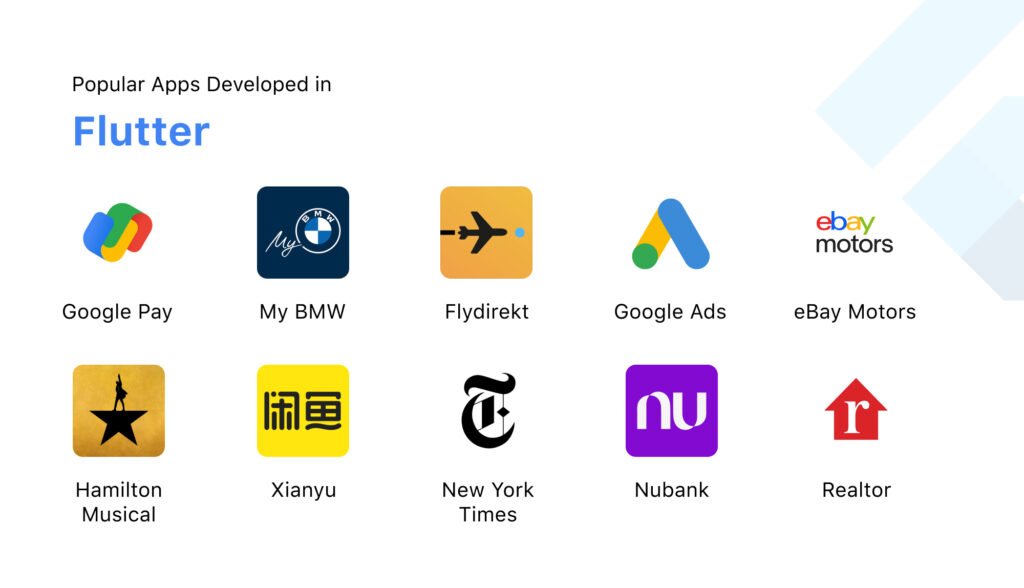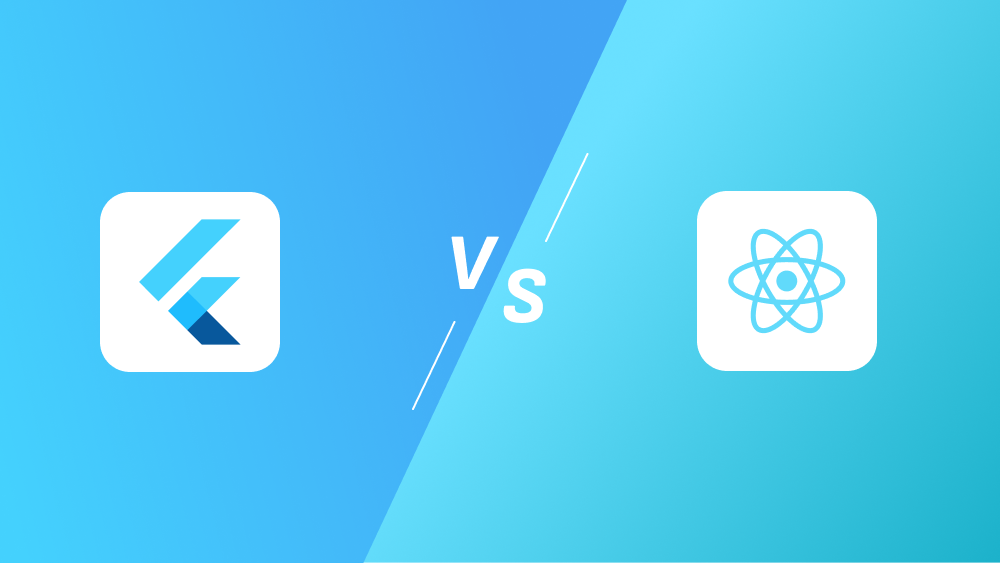The landscape of mobile app development involves choosing the proper framework, which can be like picking the right ice cream flavor. There are so many options, and everyone seems to have their favorite. Two contenders that often find themselves in the ring are Flutter vs React Native. Flutter is the brainchild of tech giant Google. It brings a unique flavor to the mobile development scene. Powered by Dart, a language known for simplicity, Flutter boasts a widget-based architecture. This approach allows developers to craft UI components and screens using a rich set of customizable widgets. On the other side of the ring stands React Native, nurtured by the folks at Facebook. It embraces the familiarity of JavaScript. This makes it an attractive choice for developers versed in web technologies.
If you have an idea for an app this article will be a guiding route for you!
The architecture of Flutter vs React Native
React Native’s architecture revolves around native components. It also provides a bridge between the JavaScript code and the native modules. Most mobile app development companies in Mumbai, India, use Flutter’s architecture as it dances to the beat of widgets. Everything in Flutter is a widget – from buttons to padding and even the app itself. This widget-centric approach simplifies the development process and contributes to a consistent and expressive UI. It’s like having a magic wand that turns your design dreams into a tangible, interactive reality.
React Native is in contrast and harmonizes with native components. It also leverages the power of JavaScript to orchestrate a symphony of native modules. This seamlessly integrates with the device’s capabilities. This bridge between JavaScript and native components gives React Native a performance edge. It also allows developers to tap into the full potential of the device.
Flutter: smooth setup
Setting up Flutter vs React Native feels like preparing a cozy workspace. With clear documentation and a user-friendly CLI, getting started is a breeze. Flutter’s compatibility with popular IDEs like Visual Studio Code and Android Studio provides developers with a comfortable coding haven. And let’s not forget the star of the show – Flutter’s Hot Reload feature. Making changes on the fly is as easy as a chef tweaking a recipe while the soup simmers.
React Native: JavaScript jam.
React Native also invites developers into a warm setup. The Node Package Manager (npm) becomes almost like a kitchen cabinet. The housing of a plethora of libraries and modules becomes quite efficient. React Native and its compatibility with Visual Studio Code and Atom ensures developers can stick to their preferred IDEs. Fast Refresh and React Native’s equivalent to Hot Reload. This adds a sprinkle of magic and allows developers to see their changes instantly.
Critical differences between Flutter vs React Native
| Technology | Flutter | React Native |
| Based on | Dart Programming Language: uses its own set of customizable widgets. | JavaScript (React) and Utilizes Native components: can be advantageous for platform-specific UI. |
| Release date | December, 2018 | March, 2015 |
| Creator | Meta: Larger community and well-established ecosystem | Meta: Larger community and well established ecosystem |
| Developed using | Android Studio or Visual Code Studio | Atom or Visual Code Studio |
| Popularity | 158k stars on GitHub as of October 2023 | 113k stars in GitHub as of October 2023. |
Integrated development environments
Flutter connection with Android Studio and Visual Studio Code is a match made in developer heaven. Android Studio comes with a robust set of tools. It provides a comprehensive environment for Android app development, which is why it is popular among mobile development companies in Mumbai, India. The Visual Studio Code, on the other hand, offers a lightweight alternative without compromising functionality. It’s pretty much like having a professional chef’s kitchen and a cozy home kitchen – pick the one that suits your taste.
React Native: flexible workspace.
React Native keeps its options open, supporting Visual Studio Code and Atom. This flexibility allows developers to choose the environment that aligns with their workflow. It’s like deciding whether you prefer a sleek, modern kitchen or a charming, rustic one – the result is a delightful dish either way.
Flutter: widget wonderland
Flutter’s UI development feels like playing with building blocks. The widget system enables developers to compose intricate UIs with ease. Need a button? There’s a widget for that. Padding, alignment, and even entire layout structures are all just widgets away. It’s like crafting a masterpiece using Lego bricks, each piece snapping into place to create a cohesive whole.
React Native: component carousel.
React Native, true to its name, embraces a component-centric approach. Developers familiar with React for the web will feel at home, as React Native components closely resemble their web counterparts. The flexibility to reuse components across platforms adds an extra layer of convenience, akin to having a set of versatile tools in your workshop that fits various projects.
Flutter: style symphony
Flutter’s approach to styling is akin to composing a symphony. The framework employs a rich set of styling options, allowing developers to customize every aspect of their app’s appearance. Flutter lets you play the conductor with a single codebase, orchestrating a visual masterpiece that resonates seamlessly across different platforms.
React Native: style serenade.
React Native vs Flutter takes a similar musical approach to styling. Developers can arrange components in a harmonious layout by leveraging the popular styling language Flexbox. While React Native’s styling may not offer the same level of minor details as Flutter, it’s like having a set playlist – reliable, familiar, and effective.
Flutter’s performance is like a well-choreographed dance. Thanks to their compiled language, Dart and Flutter apps exhibit impressive speed and efficiency. The widget-based architecture plays a significant role in this performance prowess, enabling the framework to render UIs with minimal overhead. It’s like having a dance partner who anticipates your every move, creating a seamless and enjoyable experience.
React Native: structure on JavaScript.
React Native, fueled by JavaScript, delivers a performance akin to a lively jazz ensemble. While the JavaScript layer introduces a slight overhead, React Native’s bridge to native components ensures that the app dances to the native rhythm. It’s like a jazz improvisation that makes Mobile App Development Company approach its dynamic and spirited means. This adapting to the nuances of each platform is quite commendable.
Marathon of consistency
Regarding benchmarking, Flutter vs React Native runs a marathon of consistency. The framework’s predictability and reliability make it a solid choice for projects where performance is paramount. Flutter maintains a steady pace, ensuring your app delivers a reliable and smooth user experience. React Native, on the other hand, takes on a sprint of adaptability in benchmarks. While the JavaScript layer might introduce variability, React Native’s ability to tap into native modules allows it to adapt and sprint when needed. It’s like a sprinter with the agility to navigate different terrains, ensuring your app performs admirably across diverse devices.
Community and its effectiveness
Flutter’s community feels like a lively social soiree. Developers at most mobile app development companies in India gather to share experiences, troubleshoot issues, and celebrate victories. With Google backing the framework, Flutter events and meetups buzz with energy. The ecosystem thrives on open-source contributions, with a diverse range of packages and plugins enhancing Flutter’s capabilities. It’s like attending a vibrant party where everyone is eager to share their unique dance moves.

React Native’s community is a collaborative carnival of developers from various backgrounds. Fueled by Facebook’s influence, React Native meetups and forums provide a space for knowledge exchange. The ecosystem, supported by a vast array of npm packages, mirrors a bustling marketplace. It’s like strolling through a carnival with different attractions – each booth offering something unique, contributing to the diverse tapestry of React Native development.
Third-party libraries and plugins
Flutter’s buffet of libraries and plugins is a feast for developers. The Flutter community has curated a delightful spread from navigation solutions to state management tools. The ease of integrating third-party packages adds a layer of convenience akin to picking your favorite dishes from a well-stocked buffet. Flutter’s growing ecosystem ensures that developers can access many resources, making app development a flavorful experience.
React Native’s plugin options
React Native vs Flutter plugin bazaar is a bustling marketplace where developers can find solutions to almost any challenge. With npm as its backbone, React Native’s ecosystem offers an array of third-party libraries. While the sheer volume can be overwhelming, it’s like navigating a vibrant bazaar where hidden gems await discovery. React Native’s expansive plugin ecosystem ensures developers have the tools to spice up their projects.
image
Flutter’s developer experience is akin to attending a hot reload party. The ability to witness changes instantly, without losing the app’s state, is a game-changer. Developers can iterate and experiment at the speed of thought, significantly enhancing productivity. It’s analogous to being a DJ at a party – tweaking the beats and melodies in real-time to create the perfect vibe.
On the other hand, React Native’s developer experience is more of a fast refresh fiesta. While not as instantaneous as Flutter’s hot reload, React Native’s quick refresh keeps the party going. The ability to preview changes swiftly without losing the app’s state adds a dynamic rhythm to the development process. It’s like being a conductor, making adjustments on the fly to ensure a seamless performance.
Debugging and testing tools
Flutter’s debugging tools feel like wielding a magic wand. Firstly, the framework provides robust support for debugging, offering detailed error messages and a suite of tools to diagnose issues. Additionally, the integration with popular IDEs enhances the debugging experience, turning troubleshooting into a magical journey of discovery. Notably, Flutter’s emphasis on a smooth debugging process ensures developers can quickly unravel issues.
In contrast, React Native’s testing tools create a symphony of assurance. With support for popular testing libraries like Jest, React Native empowers developers to orchestrate comprehensive test suites. Furthermore, the framework’s focus on testing ensures the final performance is harmonious and free from discordant bugs. Notably, React Native’s testing capabilities provide a reliable safety net for developers as they fine-tune their creations.
Apps based on Flutter

Apps based on React Native

FAQs
Flutter is primarily powered by Dart, known for its simplicity and efficiency.
React Native enables cross-platform development, allowing apps to run seamlessly on Android and iOS.
Flutter’s widget-based architecture simplifies UI development, allowing developers to create entire screens with customizable, reusable widgets.
React Native features Fast Refresh, the equivalent of hot reload, enabling developers to see changes instantly without losing the app state.
With its compiled language Dart, Flutter exhibits impressive performance, while React Native, fueled by JavaScript, adapts dynamically, balancing performance with flexibility.
Conclusion
Flutter and React Native have emerged as vibrant contenders in the mobile development arena, each offering its unique approach. Firstly, Flutter’s magic lies in its widget-based architecture, where Dart orchestrates a symphony of creativity. On the other hand, React Native adopts a JavaScript jazz that harmonizes seamlessly with native components, promising adaptability. You may also want to consider mobile app development costs in India.
Moreover, both frameworks provide a flavorful experience, supported by robust communities and diverse ecosystems. Whether you’re enticed by Flutter’s hot reload party or tapping into React Native’s fast refresh fiesta, the crossroads of development beckon, inviting you to create seamless and delightful experiences.
In summary, Flutter and React Native present developers with compelling options, each with its distinct melody. Flutter’s widget-based approach and Dart’s choreography create a unique symphony, while React Native’s JavaScript jazz offers adaptability. Consequently, the development journey is enriched by the hot reload party in Flutter and the fast refresh fiesta in React Native, providing a plethora of choices for creating engaging experiences.



